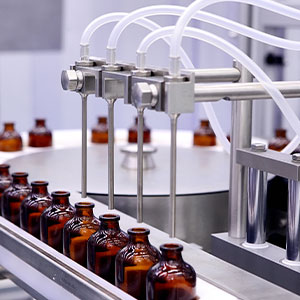 In the realm of Contamination Control Strategies (CCS), microbiological air monitoring stands as a critical pillar. However, the complexity of identifying the most suitable solution for specific applications often poses a challenge. This blog post aims to demystify the intricacies surrounding microbiological air monitoring, offering fundamental insights to guide your approach.
In the realm of Contamination Control Strategies (CCS), microbiological air monitoring stands as a critical pillar. However, the complexity of identifying the most suitable solution for specific applications often poses a challenge. This blog post aims to demystify the intricacies surrounding microbiological air monitoring, offering fundamental insights to guide your approach.
Contamination Monitoring Landscape
Continuous contamination monitoring with cutting-edge cleanroom technologies is the norm. Yet, traditional growth-based methods, confined to 4-hour sampling periods, persist as the prevailing approach in microbial monitoring. Settle plates, despite being deemed non-quantitative and non-validatable by scientific and regulatory experts, remain widely used in pharmaceutical manufacturing to provide evidence of continuous cleanroom air sampling. In contrast, active microbial air samplers, validated for prolonged continuous operation, present a more sophisticated and reliable alternative. Let’s look into the key aspects to consider.
1. Method Efficiency
- ISO 14698 Annex B: breaks down the collection efficiency of microbial air samplers into two categories: physical and biological efficiency.
- Physical efficiency pertains to the sample’s ability to collect particles of various sizes, whether inanimate or carrying microorganisms.
- Biological efficiency, slightly lower than physical efficiency, depends on the survival of collected microorganisms and the growth medium.
- Emphasis on physical efficiency in regulations highlights its significance in assessing sampler performance.
2. The Importance of Design
- Evaluate the design of Microbiological Air Monitoring devices, with a spotlight on how design influences efficiency and reliability.
- Understand the correlation between design elements and the accuracy of microbial air sampling.
- Explore how advancements in design contribute to the effectiveness of active microbial air samplers.
3. Comparing Microbiological Air Monitoring Methods
- Conduct a detailed comparison between traditional methods (e.g., settle plates) and advanced alternatives like active microbial air samplers.
- Highlight the advantages and drawbacks of each method, aiding in informed decision-making.
4. Microbiological Air Monitoring in Different Cleanroom Areas
- Explore the nuances of Microbiological Air Monitoring in various cleanroom environments.
- Tailor your approach based on specific cleanroom requirements and challenges.
5. Microbiological Air Monitoring Devices
- Showcase examples of active microbial air samplers, such as the MiniCapt Mobile® Microbial Air Sampler, emphasizing their efficacy in continuous air sampling.
Want to learn more?
Embark on a journey toward risk-assessed, and continuously monitored, cleanroom operations with Particle Measuring Systems; where innovation meets compliance. Let’s build a future where compliance, quality, and efficiency are the highlight of your operations in pharmaceutical manufacturing.
Annex 1 Insights & Updates
The European Commission released its long-awaited Annex 1 regulation in August 2023. Our experts have reviewed this document carefully and have shared their insights with you. Read our latest Annex 1 Application Notes by clicking the titles below:





